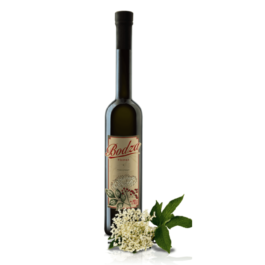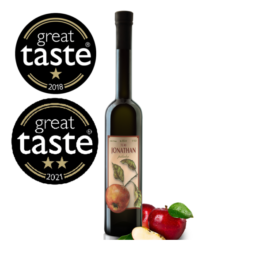Description
Premium Muscat Grape Marc:
The Fruit:
The Muscat Family of grapes¬†include over 200 grape varieties¬†belonging to the ‘Vitis vinifera’¬†species that have been used in wine production¬†and as raisin¬†and table grapes¬†around the globe for many centuries. Their colours¬†ranges from white , to yellow, to pink ,¬†to near black . Muscat grapes and wines almost always have a pronounced sweet floral .
The Story about Hungarian Grape Marc Palinka:
The Grape Marc Palinka (Pomace p√°linka, also Torkolypalinka) is a Hungarian pomace brandy, an alcoholic beverage produced by distillation from grape residues (pomace) left over from wine making . One of the oldest types of palinka, it helps digestion, and is usually consumed in small quantities after meals.
Under the 2008. LXXIII. Law of the Republic of Hungary, the Hungarian Palinka Law, only distilled beverages made using special methods and technology, from fruits produced in Hungary, mashed, distilled, matured and bottled in Hungary can be called palinka. Alcoholic beverages made from concentrates, semi-dried or dried fruit cannot legally be called palinka. The (Grape Marc) Törköly is the name of the substance consisting of parts of the grapes (pomace) that remains in the press after they are pressed in the process of wine making. Depending on the weather, the type of the grapes and the method used for pressing, 15% to 30% törköly is produced as a side product during the process of wine making, which is then used for making Grape Marc (törkölypálinka).
Once, Grape Marc ( T√∂rk√∂lyp√°linka) was one of the most commonly produced types of p√°linka. In the 1950, for example, 30% of all the p√°linka produced was t√∂rk√∂lyp√°linka, but the share of this type of p√°linka has become smaller since then. A grape distillate from Tokaji asz√ļ has been produced since the 1960s. It is a blend of flavours resembling Italian grape distillates and of the aromas of aszu wine.
The beginnings of its regular production probably date back to the 15th century. Its production became so common in the 17th century that it had to be regulated by law. The Grape Marc Palinka (Törkölypálinka) is distilled in February, March, or in April at the latest. The törköly is no longer suitable for distillation later than that. The Grape Marc (törköly) from red grapes is less precious because its acetic fermentation starts soon after the grapes are pressed.
The Story about Muscat Grapes :
Theories about the origins of Muscat grapes date ancestors of the varieties back to the ancient Egyptians¬†and Persians¬†of early antiquity (c. 3000-1000 BCE) while some ampelographers, such as Pierre Galet, believe that the family of Muscat varieties were propagated¬†during the period of classical antiquity¬†(c. 800 BCE to 600 CE) by the Greeks¬†and Romans. However, while domestic wine production had a long history¬†in ancient Egypt and Persia and classical writers such as Columella¬†and Pliny the Elder¬†did describe very “muscat-like” grape varieties such as Anathelicon Moschation and Apianae¬†that were very sweet and attractive to bees (Latin apis), there is no solid historical evidence that these early wine grapes were members of the Muscat family.
The first documented mention of grape called “muscat” was in the works of the English Franciscan¬†scholar Bartholomeus Anglicus¬†who wrote of wine made from Muscat grapes in his work De proprietatibus rerum¬†written between 1230-1240 while Anglicus was studying in what is now modern Saxony¬†in Germany. Anglicus’ Latin work was translated into French¬†in 1372 with the wine being described by Anglicus as ‘vin extrait de raisins muscats’.
We recommended the Premium Muscat Grape Marc Palinka after meal.






Reviews
There are no reviews yet.